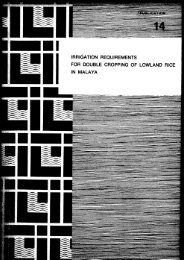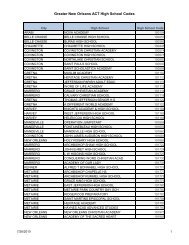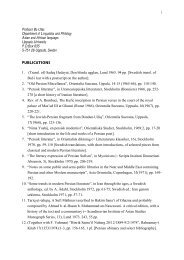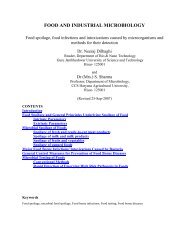On the Future of Indigenous Traditions - Munin
On the Future of Indigenous Traditions - Munin
On the Future of Indigenous Traditions - Munin
You also want an ePaper? Increase the reach of your titles
YUMPU automatically turns print PDFs into web optimized ePapers that Google loves.
With regard to <strong>the</strong> categories <strong>of</strong> <strong>the</strong> Adivasis lands taken from <strong>the</strong>se (revenue) 67<br />
villages that have gone into making <strong>of</strong> <strong>the</strong>se industrial estates are not present here,<br />
however. This was just simply to demonstrate <strong>the</strong> scale in which <strong>the</strong> acquisition could<br />
evict and dispossess people who own it for no or very little in return. In Jharkhand<br />
most <strong>of</strong> <strong>the</strong> Adivasis from ei<strong>the</strong>r <strong>of</strong> <strong>the</strong> groups would have inherited <strong>the</strong>ir ancestral<br />
lands, unless <strong>the</strong>y have fully mortgaged it or left it completely for reasons <strong>of</strong> it not<br />
being cultivatable or o<strong>the</strong>r reasons. In <strong>the</strong> above cases, if we could find case studies<br />
done on <strong>the</strong>m, which is not very likely, <strong>the</strong>re would be many examples.<br />
In fact <strong>the</strong> acquisition <strong>of</strong> land in India and o<strong>the</strong>r immovable properties are mostly<br />
acquired under <strong>the</strong> Land Acquisition Act <strong>of</strong> 1894 (as amended in 1984). “This law<br />
was not enacted with <strong>the</strong> resettlement in view. It was enacted in <strong>the</strong> nineteenth<br />
century when <strong>the</strong> maintenance <strong>of</strong> law and order, and not development, was <strong>the</strong> main<br />
focus <strong>of</strong> colonial government administration” says, Hari Mohan Mathur in his book<br />
‘Managing Resettlement in India’. Mathur who is a development management and<br />
resettlement specialist worked in government also remarks that resettlement was not<br />
<strong>the</strong> issue that it is today when this law was promulgated. This ‘archaic law’, still in<br />
force, however is inadequate to meet <strong>the</strong> problems that people now face due to loss <strong>of</strong><br />
<strong>the</strong>ir lands for dams… <strong>the</strong>rmal power stations, mining operations, and o<strong>the</strong>r similar<br />
developmental projects, making reference to Sukumar Das’s essay. 68<br />
2.7.2. Case illustration: Peraj East Open Cast mining project and<br />
displacement<br />
What is it like for an Adivasi to be evicted, uprooted, or in milder words ‘displaced’<br />
from his /her ancestral land and its surrounding for certain projects -mining, dam, or<br />
o<strong>the</strong>r industries? <strong>On</strong>ce evicted, <strong>the</strong> slang used among <strong>the</strong> local people for a displaced<br />
person is ‘uthlu’ in <strong>the</strong> Hazaribag area, a term to express a sense for those having lost<br />
<strong>the</strong>ir very ground or social base <strong>of</strong> <strong>the</strong>ir identity to be part <strong>of</strong> a larger society. But how<br />
<strong>the</strong> Adivasis <strong>the</strong>mselves feel about it, and why <strong>the</strong>y feel so, could be seen from one <strong>of</strong><br />
67 Revenue village is an administrative unit <strong>of</strong> a village with several helmets and its different categories<br />
<strong>of</strong> land around <strong>the</strong> village and its several helmets. Each family could have five to twenty acres <strong>of</strong> lands.<br />
68 Hari Mohan Mathur, Managing Resettlement in India (New Delhi:Oxford University Press, 2006), 8<br />
50

















